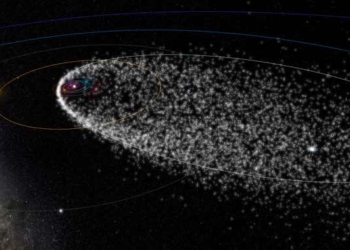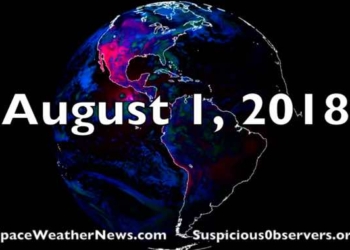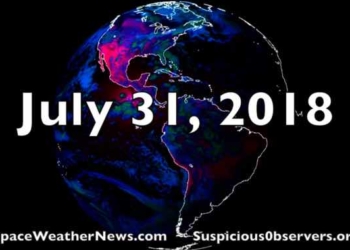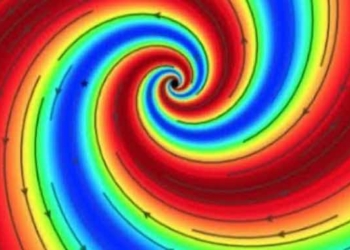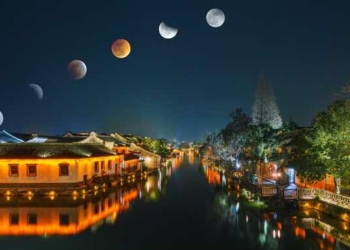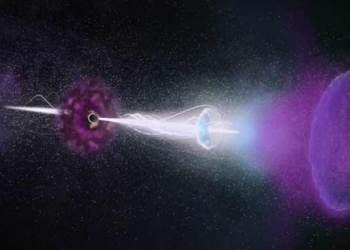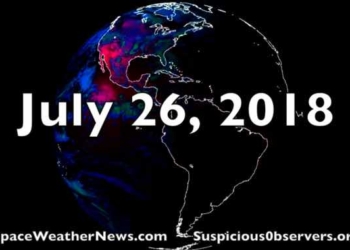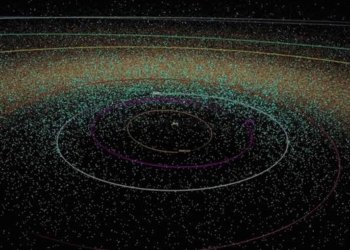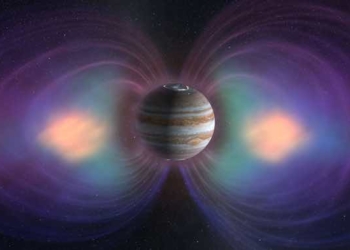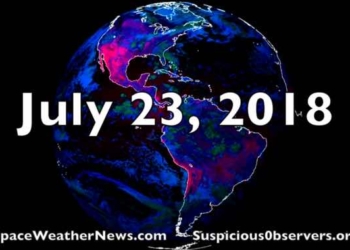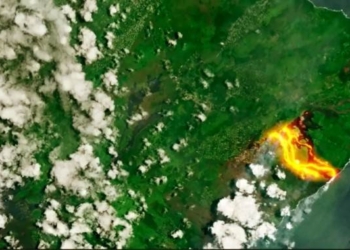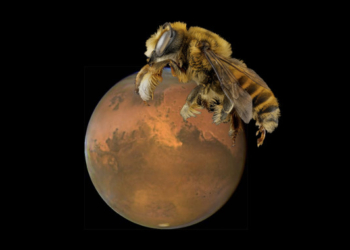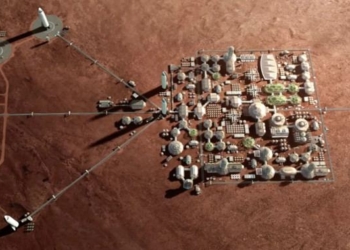Earth & Space
Space Weather, Perseids Meteor Shower, Lightning Video, Exoplanets | S0 News Aug.2.2018
Daily sun, earth and space science for Thu, Aug 2, 2018: Space Weather, Perseids Meteor Shower, Lightning Video, Exoplanets, Icy...
Read moreDetailsGreat Pyramid Secret Discovered, Your Magnetic Brain is Affected by Space Weather and Cosmic Rays | S0 News Aug.1.2018
Daily sun, earth and space science for Wed, Aug 1, 2018: Great Pyramid Secret Discovered, Your Magnetic Brain is Affected...
Read moreDetailsUSA Hits Cosmic Ray Max, Lightning, Deadly Hail, Colliding Stars, New Understanding of Deep Earthquakes | S0 News Jul.31.2018
Daily sun, earth and space science for Monday, July 31, 2018: USA Hits Cosmic Ray Max, Hail/Lightning, Colliding Stars, New...
Read moreDetailsSolar Watch, Dark Energy Stumbles, Melting Ice Means Cold Siberia, Galactic Magnetic Field | S0 News Jul.30.2018
Daily sun, earth and space science for Monday, July 30, 2018: Solar Watch, Dark Energy Stumbles, Melting Ice Means Cold...
Read moreDetailsDeadly Earthquake Strikes Indonesia, Hail Storms, Tornado, Electric News | S0 News Jul.29.2018
Daily sun, earth and space science for Sunday, July 29, 2018: Deadly Earthquake Strikes Indonesia, Hail Storms, Tornado, Electric News
Read moreDetailsHow To Watch TODAY’s Superlong, Blood Moon Total Lunar Eclipse ONLINE (It Won’t Be Visible in North America)
The total lunar eclipse tomorrow (July 27) won't be visible for people across North America, and bad weather could threaten...
Read moreDetailsHuge Science Discoveries, Super Cool Multi-Strike Lightning Video | S0 News Jul.27.2018
Daily sun, earth and space science for Friday, July 27, 2018: Huge Science Discoveries, Super Cool Multi-Strike Lightning Video
Read moreDetailsMars Liquid Water Found, Cascadia Fault, Yellowstone Cause | S0 News Jul.26.2018
Daily sun, earth and space science for Thursday, July 26, 2018: Mars Liquid Water Found, Cascadia Fault, Yellowstone Cause
Read moreDetailsEruption Shockwave, Better Slow-Motion Lightning Video, NEO Objects, EPA Transparency | S0 News Jul.25.2018
Daily sun, earth and space science for Wed, July 25, 2018: Eruption Shockwave, Better Slow-Motion Lightning Video, EPA Wants More...
Read moreDetailsSlow-Motion Lightning, Cold Future, Jupiter’s Magnetic Field, Climate Studies | S0 News Jul.24.2018
Daily sun, earth and space science for Tue, July 24, 2018 by Suspicious 0bservers: Slow-Motion Lightning, Cold Future, Jupiter’s Magnetic...
Read moreDetailsLargest Hawaii Eruption Yet, Deadly Storm in Vietnam, Climate Change Hypothesis Debunked | S0 News Jul.23.2018
Daily sun, earth and space science for Mon, July 23, 2018 by Suspicious 0bservers: Largest Hawaii Eruption Yet, Deadly Storm...
Read moreDetailsSatellite Images Show The Massive Lava Flow From Hawaii’s Kilauea Volcano From Space
These stunning images from NASA show Hawaii's massive Kilauea volcano lava flow from space. The images are from the Sentinel...
Read moreDetailsNASA Funds Project to Put Robot Bees on Mars
“With their ability to fly through the ultra-low-density atmosphere of Mars, Marsbees will enable researchers to gather previously unattainable data...
Read moreDetails‘Out of Control’ Chinese Space Lab To Become a Celestial Fireball and Impact Earth TODAY
South Korea’s National Space Situational Awareness Organisation said on Sunday the 10.4-metre-long (34-foot) Tiangong-1 space station is expected to re-enter...
Read moreDetailsMars Colony Would Be a Hedge Against World War III, Elon Musk Says
Elon Musk has long stressed that he founded SpaceX in 2002 primarily to help make humanity a multiplanet species —...
Read moreDetails


